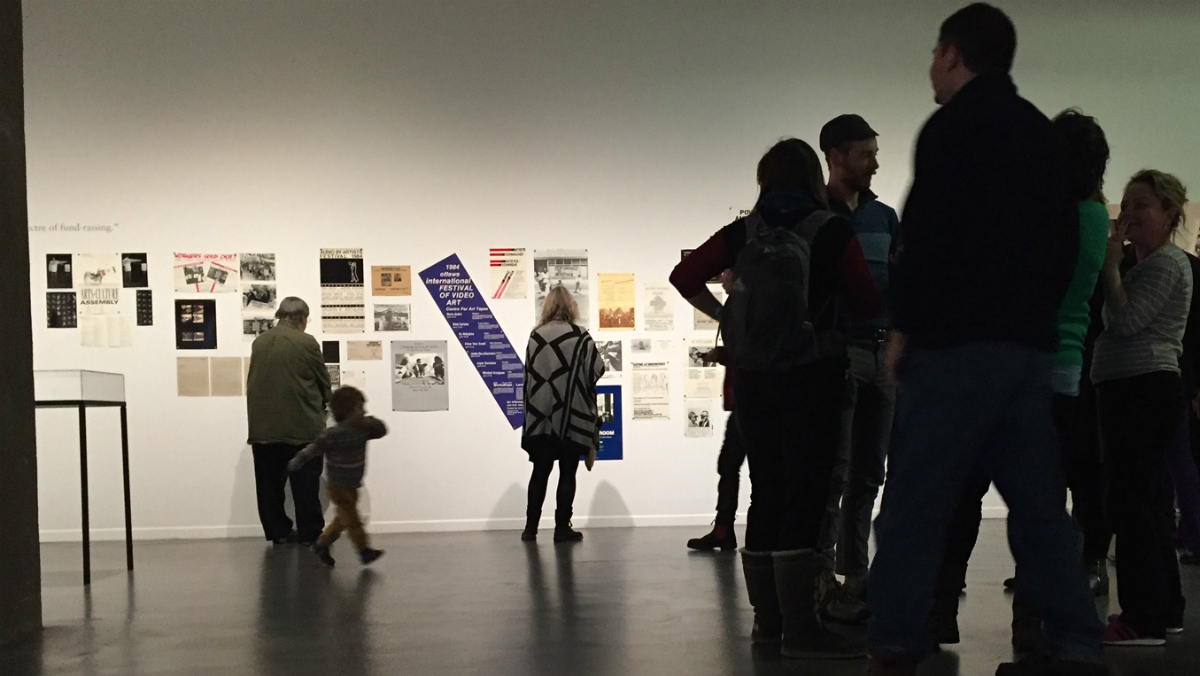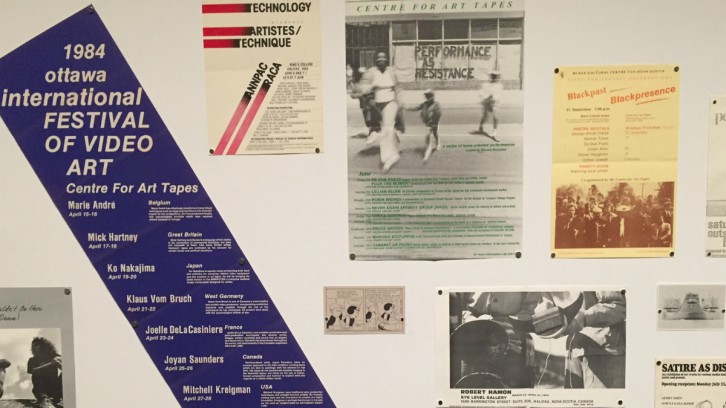Modern art
Exhibit documents Halifax artists’ survival over 40 years
An exhibition at the Dal art gallery interprets artist-run galleries from the 1970s

caption
Students, artists and people from gallery gathered at Dalhousie Art Gallery on Jan. 21 for the opening party.![Creighton Barrett, digital archivist at Dalhousie University, says the challenges for artists [in getting] funding haven’t changed for 40 years.](https://signalhfx.ca/wp-content/uploads/2016/01/Museum-2-Creighton-726x408.jpg)
caption
Creighton Barrett, digital archivist at Dalhousie University, says the challenges for artists to get funding hasn’t changed for 40 years.
A new exhibition at the Dalhousie Art Gallery shows how that has happened in Nova Scotia over the past 40 years. Under the curation of Creighton Barrett and Peter Dykhuis, the show highlights the printed legacy of artist-run communities by documenting exhibition records.
The gallery collected records, posters and pamphlets of art exhibitions curated by Halifax artists in the 1970s and ‘80s.

caption
Posters of past exhibition show various art culture bloomed in Halifax .Standing in front of the gallery’s wall displaying dozens of old documents exchanged between artists and the federal government, Barrett, a digital archivist at Dalhousie, said he was just planning to wrap them up into his journal article.
“I never finished the article,” laughed Barrett. Since Halifax hadn’t had a retrospective exhibition of “artist-run” culture, he started thinking of sharing his findings with people in the form of an exhibition.
In the late 1970s, Canadian artists started to establish ways to show their works to the public by themselves, instead of leaving their works in the hands of professional gallery curators. These spaces were called “parallel galleries” or “alternative spaces” and were spread across the country. Under this flexible curation, art started to develop in more media than ever: audio, video, performance and installations using various objects.
In Halifax, two galleries have witnessed the history of artist-run culture over the past 40 years: Eye Level Gallery (ELG) and the Centre for Art Tapes (CFAT), which donated their historical artifacts and records to the Dalhousie University Archives a decade ago.
For Dykhuis, who curated the 20th anniversary show at ELG, the exhibition represents more than just archival records.
“People who were names in the archives were my friends and colleagues here in Halifax, or professional acquaintances from across the country,” he said.
Tips for young artists
One of Barrett’s motivations for mounting the exhibition was to chronicle the timeless values of artists in Halifax who have tried to survive since the ’70s. Even for modern artists, funding is still a problem.
He says he hopes the audience looks at those successful artists and sees their challenges and the responses from the government.
[idealimageslider id=”7198″]
“It’s about cultural administration,” said Barrett, looking at documents on the wall — some of them with red stamps, some with photos showing those artists’ performance against the government’s attitude toward funding.
“All of these quotes were selected because they’re historical phrases but (are) still relevant today,” he said.
Anna Porder, who works at NSCAD, said learning the galleries’ history and understanding their processes could help Haligonian artists today.
“We’re lucky to have such grassroots communities supporting artists. Young artists can benefit by learning about them,” said Porder.
Katie Belcher, executive director at Eye Level Gallery, said the exhibition gives a refreshing opportunity for the gallery to ask itself ”Are we still alternative? Are we able to be critical?”
The exhibition includes a showcase of current artists from ELG in the corner, contrasting both the gallery’s history and its current work today in the same place. The exhibition will last until April 17.
Correction:
About the author

Lisa Takagi
Lisa Takagi is a journalist and artist living in Halifax. Takagi has covered culture and cultural issues in Nova Scotia since she moved from...